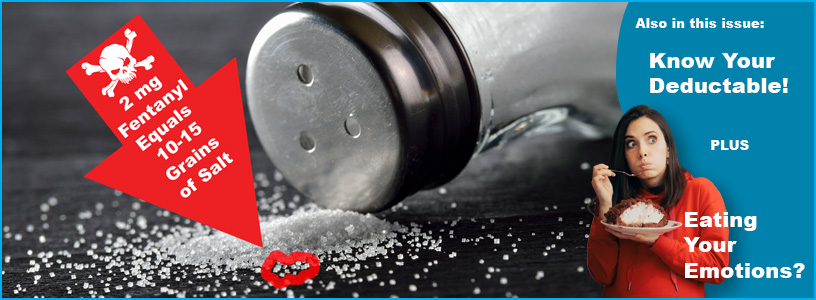JUST ONE PILL CAN KILL: Protect Your Kids from Dangerous Drugs
Young people today are in danger of exposure to fentanyl, a synthetic opioid that is 50 times more potent than heroin. Just two milligrams of fentanyl, which is equal to 10-15 grains of table salt, is a lethal dose. Over 150 people in the U.S. die EVERY DAY from overdoses related to fentanyl.
Drug traffickers use social media to advertise drugs and sell highly addictive “rainbow fentanyl” that looks like candy to children. They can reach any kid with a smartphone and a social media account using emoji codes that appear harmless. Parents and caregivers, learn more at www.dea.gov/onepill.
Cannabis edibles are another danger to children. Many look like candies, cookies, or snacks and are attractive to kids. While adults consume just one, children may eat an entire package. Signs of marijuana poisoning in children are excessive sleepiness, dizziness, and difficulty breathing, which may require emergency care.
Take steps to protect your children:
- Lock up all medications, including marijuana products.
- Talk with your kids about the dangers of using drugs.
- Monitor your child’s social media usage.
Resources:
- DEA: Growing Up Drug Free: A Parent's Guide to Substance Use Prevention
- DEA: One Pill Can Kill
- CDC: How to Use Naloxone Nasal Spray
STRESSED IS DESSERTS SPELLED BACKWARDS: Are You Eating Your Emotions?
Everyone reaches for comfort food now and then. A bag of chips after a tough meeting or a bowl of ice cream after a rough day makes us all feel better.
However, regularly consuming food to deal with difficult emotions, life’s challenges, or a traumatic event can be something more serious called “disordered eating.”
While not a recognized eating disorder (like anorexia or bulimia), disordered eating increases the risk for developing eating disorders, bone loss, gastrointestinal issues, obesity, high or low heart rate, high or low blood pressure, increased anxiety, depression, and social isolation. Here are some problem signs:
- Being overly concerned about weight loss, dieting, and food
- Secretly binge eating large quantities of food at one time
- Skipping meals or taking small portions of food at regular meals
- Appearing uncomfortable eating around others
- Having an extreme concern with body size and shape
- Exhibiting frequent mood swings
- Withdrawing from usual friends and activities
Eating disorders are a serious condition, resulting in 10,200 deaths in the U.S. each year—that’s one death every 52 minutes. About 26% of people with eating disorders attempt suicide.
Concerned you (or someone you care about) may be in the danger zone? Start with this confidential, online screening to assess habits. Then, talk with a mental health professional about the steps to take right now to prevent serious health outcomes later.
Resources:
- National Eating Disorders Association: Helpline and Screening Tool
- SD-1 Trust (Infographic): Mental Health Benefits
WHAT YOU PAY: Know Your Deductible
The deductible is the amount you pay each Plan Year before the Health Plan pays benefits. With a $100 deductible, for example, you pay the first $100 of covered services yourself. After you pay the deductible, you usually pay only a copayment or coinsurance for covered services and the Health Plan pays the rest.
Family plans have both an individual deductible and a family deductible. Here’s how that works: Each person pays an individual deductible until the amount of the family deductible is met. Then plan begins to pay for all family members, even if there are family members who did not pay an individual deductible.
- Every Plan Year the deductible starts over.
- Deductible amounts vary by Plan. You can find your Plan’s deductible amount in your Benefit Guide or on the SD-1 Trust website. Click “current Plan Year information” under “Already Enrolled?” on the Home Page, then choose your union group and status.
- Log in on your medical plan’s website (Kaiser Permanente or Cigna) to see how much you’ve paid so far this Plan Year.
- No deductible is required for recommended preventive services including an annual exam, recommended cancer screening tests and immunizations.
Resources:
- SD-1 Trust (Video) What’s the Deductible?


